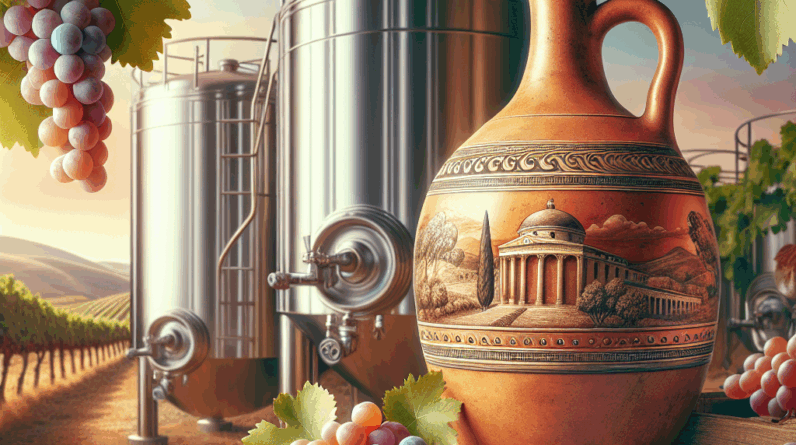Italy is renowned for its exquisite wines, which are deeply intertwined with the country’s cultural heritage. The traditions and rituals surrounding Italian wine are a reflection of the agrarian lifestyle, historical events, and social norms that have shaped the Italian way of life. The following guide explores the rich tapestry of Italian wine traditions, including ancient customs, modern practices, and insights into the daily and celebratory rituals associated with wine consumption.
The Historical Roots of Italian Wine
Ancient Beginnings
Wine production in Italy dates back thousands of years, with evidence of viticulture traced to the Etruscans around 800 B.C. The Romans further refined wine-making techniques and expanded viticulture throughout their empire. Roman poets, such as Virgil and Horace, celebrated wine in their works, contributing to the social and cultural significance of wine in Italy.
The Influence of the Catholic Church
During the Middle Ages, the Catholic Church played a pivotal role in the preservation and advancement of wine traditions, particularly in the production of sacramental wine. Monasteries became centers of viniculture, employing advanced techniques that would significantly influence modern Italian wine-making.
Italian Wine Regions
The Italian peninsula is home to a myriad of distinctive wine regions, each with unique terroirs, grape varieties, and winemaking practices. The following are some prominent regions:
- Tuscany: Home to Chianti and Brunello di Montalcino, Tuscany is renowned for its Sangiovese grapes and the wine-producing heritage that dates back to the Etruscans.
- Piedmont: Famous for Barolo and Barbaresco, this region is known for Nebbiolo grapes and traditional winemaking methods.
- Veneto: Known for Prosecco and Amarone, the Veneto region boasts a variety of styles and techniques that showcase the diversity of Italian wines.
- Sicily: The largest island in Italy has gained recognition for its rich terroirs and indigenous varieties like Nero d’Avola and Grillo.
Traditional Italian Wine-Making Practices
The Harvest
Harvest season is a crucial time in the Italian winemaking calendar. Typically occurring between September and October, the grape harvest, or vendemmia, is celebrated with great enthusiasm. Families and communities come together to celebrate the harvest with feasts, music, and, of course, plenty of wine. This tradition embodies the connection between the land and the people, standing as a testament to the importance of community in viticulture.
The Pressing and Fermentation
After the harvest, grapes are pressed and fermented—a process steeped in traditions passed down through generations. Many winemakers still use traditional wooden presses, while more modern techniques have also taken root. Fermentation takes place in different vessels, such as stainless steel or wooden barrels, depending on the desired flavor profile. The ritual of wine-making symbolizes patience and craftsmanship, with each step reflective of the winemaker’s philosophy.
The Rituals of Enjoying Wine
Wine in Daily Life
Wine is deeply integrated into daily life in Italy. It is customary to enjoy a glass of wine with meals, where local wines are paired with regional dishes. In many Italian households, wine is not just a drink but an essential element of family gatherings, often enjoyed with a shared sentiment of gratitude and togetherness.
Celebratory Rituals
-
Toasting: In Italian culture, a toast, or brindisi, is a significant moment in any gathering. It is common to raise a glass and make eye contact while uttering “Salute!” (health), signaling goodwill and camaraderie.
-
Wine Festivals: Various regions in Italy celebrate wine festivals, known as sagre del vino, where locals and tourists gather to taste wines, enjoy local food, and immerse themselves in the culture. These festivals are vibrant affairs that showcase the best of local viticulture.
- Weddings and Ceremonies: Wine plays a special role in weddings and ceremonial occasions. The bride and groom often share a glass of wine, symbolizing their union. In many regions, uncorking a bottle of wine together signifies blessings as they embark on their new journey.
Modern Wine Practices
Sustainability in Winemaking
In recent years, the focus on sustainable practices has grown among Italian winemakers. Organic and biodynamic farming methods are being embraced, reflecting a deeper respect for the environment. Many wineries are committed to producing high-quality wines while minimizing their ecological impact.
The Global Influence
Italian wine has gained international acclaim, leading to innovations in wine production. Many modern Italian wineries are blending traditional methods with advanced techniques, providing a unique perspective on the old and new. This fusion results in wines that maintain authenticity while appealing to the modern palate.
Conclusion
Italian wine traditions and rituals are a rich tapestry woven with history, culture, and community. From ancient customs handed down through generations to modern practices influenced by sustainability, these traditions highlight the pivotal role wine plays in Italian life. Each glass of wine tells a story, creating connections between people, places, and the past, ensuring that Italy’s wine heritage continues to thrive.
FAQs about Italian Wine Traditions and Rituals
Q1: What is the significance of wine in Italian culture?
Wine is not just a beverage but a symbol of community, heritage, and celebration in Italian culture. It plays a vital role in daily meals, family gatherings, and significant life events.
Q2: What is the traditional wine-making process in Italy?
The traditional wine-making process includes grape harvesting, pressing, fermentation, and aging. It often involves community participation, especially during the harvest season.
Q3: Are there any wine festivals in Italy?
Yes, Italy hosts numerous wine festivals (sagre del vino) throughout the year, where locals and tourists come together to celebrate wine, food, and the cultural heritage of various regions.
Q4: What is a common phrase used for toasting in Italy?
The common phrase for toasting in Italy is “Salute!” which means “health.” Making eye contact during the toast is also considered important.
Q5: How is Italian wine evolving in modern times?
Italian wine is evolving through a focus on sustainability and organic practices while blending traditional winemaking methods with modern techniques, appealing to evolving consumer preferences.
If you enjoyed this article and want to learn more about Italian Cuisine, please visit https://pizzapartiesofamerica.com/









